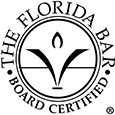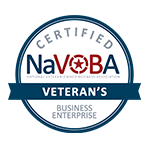What are public-private partnerships?
Public-private partnerships (P3s) are collaborative agreements between government entities and private-sector businesses. These partnerships aim to leverage the expertise and resources of both sectors to achieve public goals more efficiently and effectively. In Florida, public-private sector partnerships often intersect with real estate law, business law, and government relations.
A notable example of a public-private sector partnership in Florida is the Miami Intermodal Center (MIC). This transportation hub, developed through a collaboration between the Florida Department of Transportation (FDOT) and private companies, combines various modes of transportation, including buses, rental cars, and Metrorail. The MIC exemplifies how public-private partnerships can enhance public infrastructure and stimulate economic development in the state.
Need help facilitating opportunities in the public sector? Schedule your consultation today with a top public-private partnership attorney.
Which Florida laws, rules, and regulations apply to public-private partnerships?
Florida Statutes Section 255.065 and Section 334.30 establish the framework for public-private partnerships for public and transportation facilities, respectively. These statutes outline the procedures for soliciting, receiving, and evaluating proposals for P3s and the criteria for selecting private entities.
Additionally, agencies like the Florida Department of Transportation (FDOT) guide public-private partnerships, including this reference guide. Moreover, local governments like Miami-Dade County often provide more specific guidelines for P3s.
Understanding and adhering to these state and local laws, rules, and regulations is crucial for successfully implementing public-private partnerships in Florida.
How do legal entities connect to public-private partnerships?
Public-private partnerships (P3s) often involve the creation of a specific legal entity to carry out the project. This entity, often called the Special Purpose Vehicle (SPV) or Project Company, is usually a separate legal entity created by the public and private partners. Here are some of the most common legal structures used in P3s:
- Joint Venture (JV): In a joint venture, both the public and private sector entities contribute equity and share in the revenues, expenses, and control of the enterprise. The JV can be a new legal entity (like a corporation or partnership) or a contractual relationship without a separate legal entity. In either case, the partners share in the risks and rewards of the project.
- Limited Partnership (LP) or Limited Liability Partnership (LLP): In these structures, one or more general partners have unlimited liability and manage the enterprise, while limited partners contribute capital and have limited liability. These structures can provide tax advantages and limit the liability of the limited partners, but they also require the general partners to bear most of the risk.
- Corporation: A corporation is a separate legal entity owned by shareholders and can be used for a P3 project. The public and private partners can be shareholders, and the corporation can raise additional capital through debt or equity. Corporations limit the liability of their shareholders, but they also involve more complex governance and regulatory requirements.
- Limited Liability Company (LLC): An LLC provides the limited liability of a corporation and the tax advantages of a partnership. The members of an LLC can include public entities, private companies, and other stakeholders. Its members can manage an LLC, or it can have a separate management structure.
- Concessionaire: The public sector grants a private entity (the concessionaire) the right to operate, maintain, and invest in a public asset for a given time. The concessionaire is typically a separate legal entity owned by private sector partners, which bears significant operational and financial risk but stands to gain from the revenues generated by the asset.
- Build-Operate-Transfer (BOT) or Build-Own-Operate-Transfer (BOOT) Structure: In these structures, a private entity (or consortium of entities) builds and operates a facility for a certain period, after which ownership transfers back to the public entity. The entity operating under this structure is typically an SPV explicitly created for the project.
Each of these structures has its own legal and financial framework, and the choice of form depends on factors like the nature of the project, the regulatory environment, the risk tolerance of the partners, and the project’s financial requirements. For example, a JV might be appropriate for a project where both partners want to share control and risk. At the same time, a BOT or BOOT structure might be more suitable for a large infrastructure project where the private partner is willing to take on more risk in return for potential profits.
Regardless of the structure, the key to a successful P3 is a clear and comprehensive agreement that sets out the rights and responsibilities of each partner, the risk-sharing arrangements, and the financial arrangements. This agreement should tailor to the project’s and the partners’ specific circumstances and form from a comprehensive understanding of the legal and regulatory framework governing P3s.
When a set of facts is appropriate for facilitating a partnership with the public sector, there are many paths a client may take. We are value-based attorneys at Jimerson Birr, which means we look at each action with our clients from the point of view of costs and benefits while reducing liability. Then, based on our client’s objectives, we chart a path to seek appropriate remedies.
To determine whether your unique situation may necessitate litigation or another form of specialized public sector advocacy, please contact our office to set up your initial consultation.
How can counsel facilitate structuring legal entities to address project and corporate needs on behalf of businesses, and what are the associated strategic benefits?
Counsel plays a crucial role in structuring legal entities for P3s by:
- Assessing the project’s goals and identifying suitable legal structures, such as limited liability companies (LLCs), joint ventures, or special purpose vehicles.
- Ensuring compliance with Florida’s P3 statutes and other applicable laws, including tax and environmental regulations.
- Drafting and negotiating partnership agreements to clearly define each party’s roles, responsibilities, and risk allocations.
Strategic benefits of engaging counsel in P3 structuring include:
- Minimizing legal and financial risks through appropriate risk allocation and compliance with regulations.
- Facilitating smoother negotiations and dispute resolution, as counsel helps identify potential pitfalls and suggests solutions.
- Enhancing the project’s credibility and attractiveness to investors as a well-structured legal entity demonstrates professionalism and reduces uncertainties.
Please contact our office to set up your initial consultation to see what forms of legal protection and advocacy may be available for your unique situation.
Frequently Asked Questions
- What types of projects are eligible for P3s in Florida?
Florida allows P3s for various projects, including transportation, social infrastructure, and environmental initiatives. Eligible projects must provide public benefit, meet statutory requirements, and obtain necessary approvals from relevant authorities.
- How are P3s financed in Florida?
P3 financing can include private equity, debt, and government grants or loans. The private partner’s compensation may be performance-based, involving availability payments, user fees, or a combination.
- Can foreign entities participate in Florida P3s?
Foreign entities can participate in Florida P3s, provided they comply with all applicable laws and regulations, including those related to foreign investment and corporate registration.
Have more questions about how your business can access new opportunities in the public sector?
Crucially, this overview of structuring legal entities to address project and corporate needs does not begin to cover all the laws implicated by this issue or the factors that may compel the application of such laws. Every case is unique, and the laws can produce different outcomes depending on the individual circumstances.
Jimerson Birr attorneys guide our clients to help make informed decisions while ensuring their rights are respected and protected. Our lawyers are highly trained and experienced in the nuances of the law, so they can accurately interpret statutes and case law and holistically prepare individuals or companies for their legal endeavors. Through this intense personal investment and advocacy, our lawyers will help resolve the issue’s complicated legal problems efficiently and effectively.
Having a Jimerson Birr attorney on your side means securing a team of seasoned, multi-dimensional, cross-functional legal professionals. Whether it is a transaction, an operational issue, a regulatory challenge, or a contested legal predicament that may require court intervention, we remain tireless advocates at every step. Being a value-added law firm means putting the client at the forefront of everything we do. We use our experience to help our clients navigate even the most complex problems and come out the other side triumphant.
If you want to understand your case, the merits of your claim or defense, potential monetary awards, or the amount of exposure you face, you should speak with a qualified Jimerson Birr lawyer. Our experienced team of attorneys is here to help. Call Jimerson Birr at (904) 389-0050 or use the contact form to schedule a consultation.

We live by our 7 Superior Service Commitments
- Conferring Client-Defined Value
- Efficient and Cost-Effective
- Accessibility
- Delivering an Experience While Delivering Results
- Meaningful and Enduring Partnership
- Exceptional Communication Based Upon Listening
- Accountability to Goals









